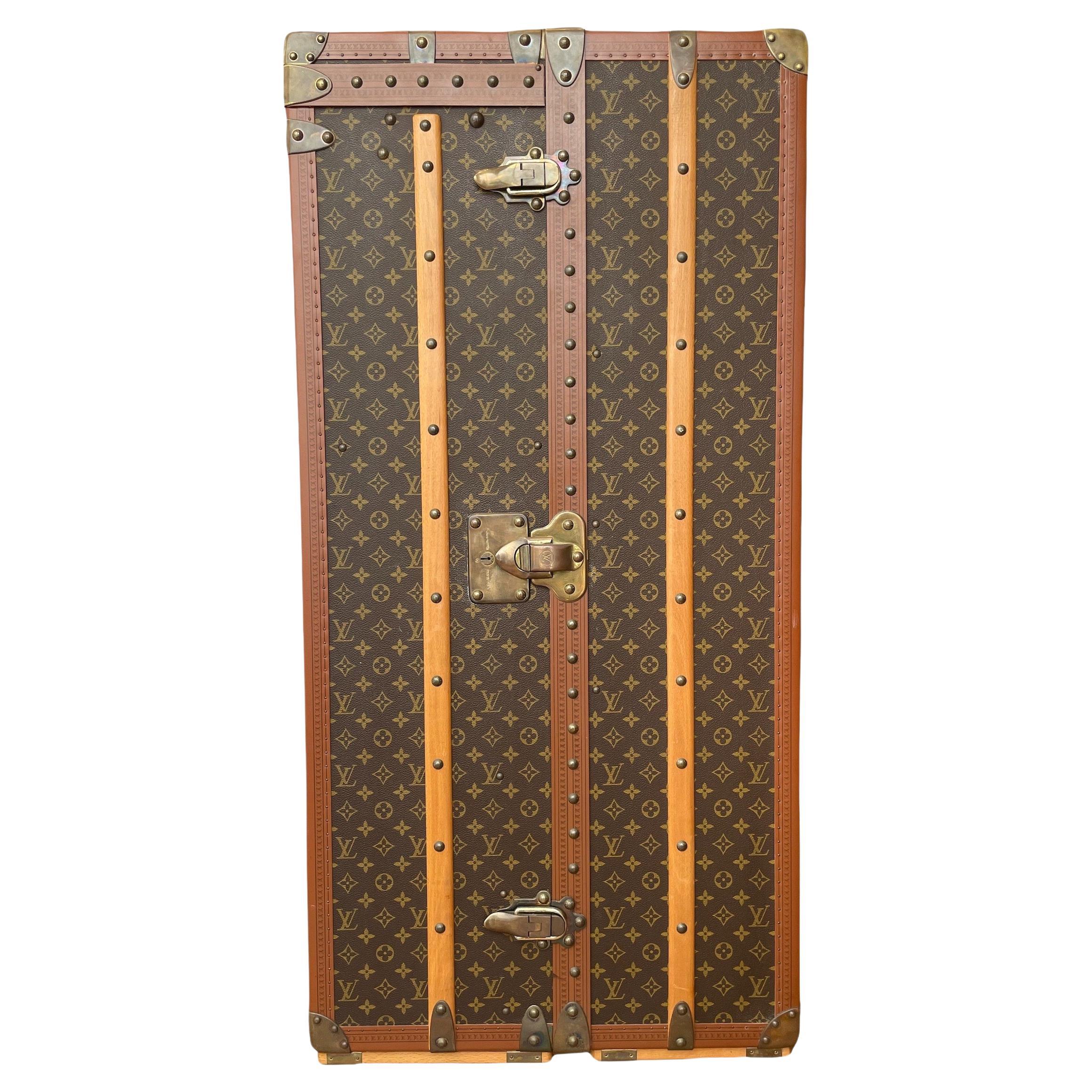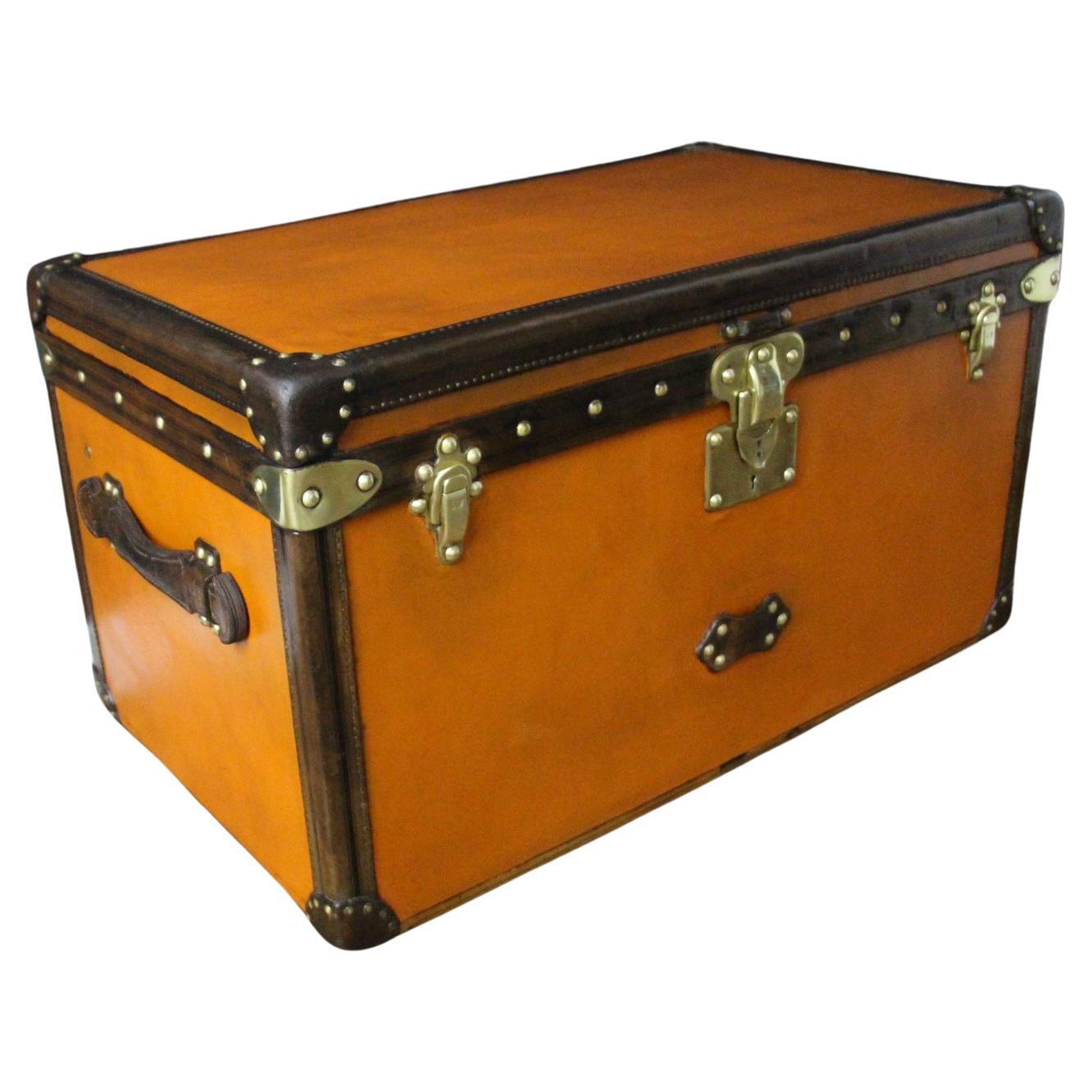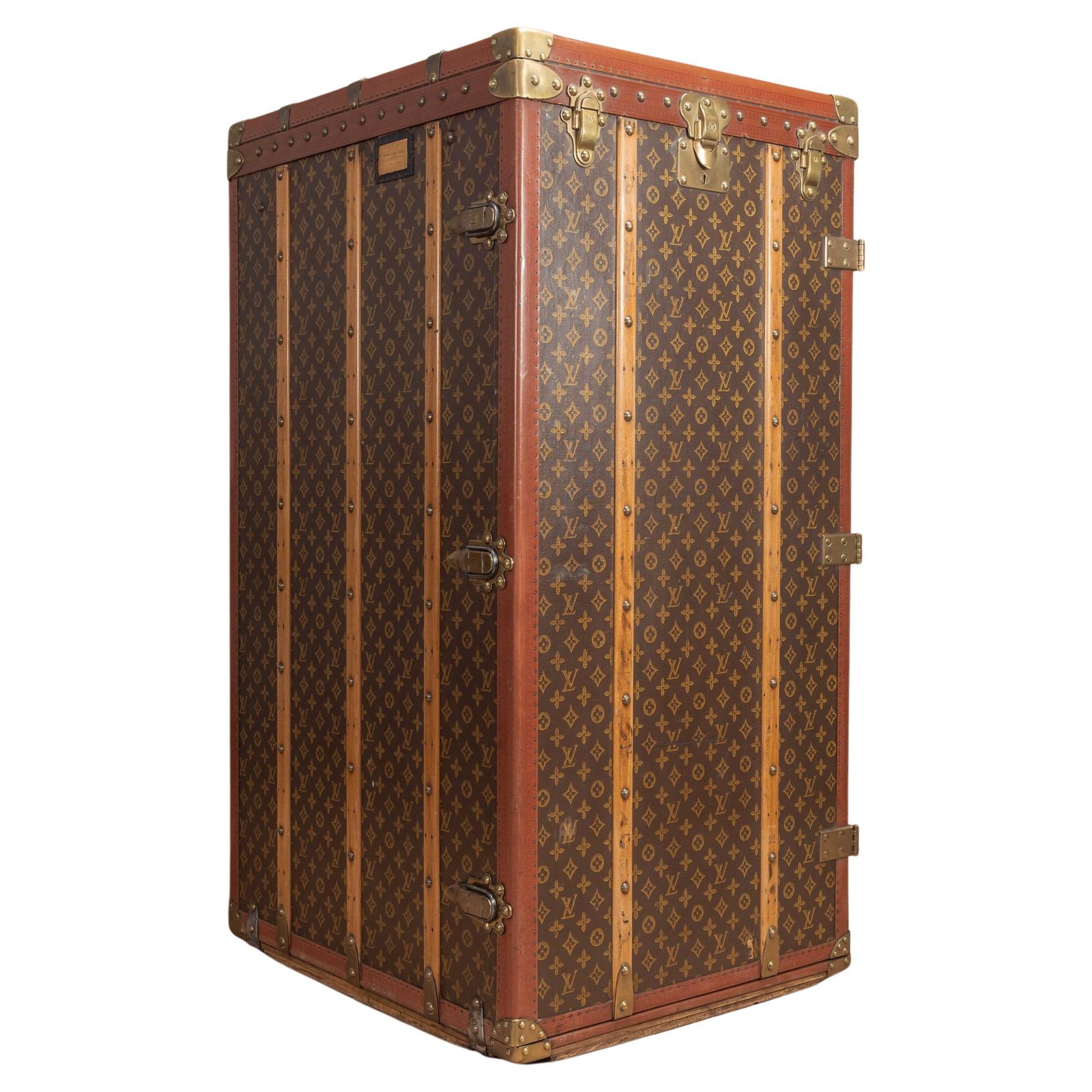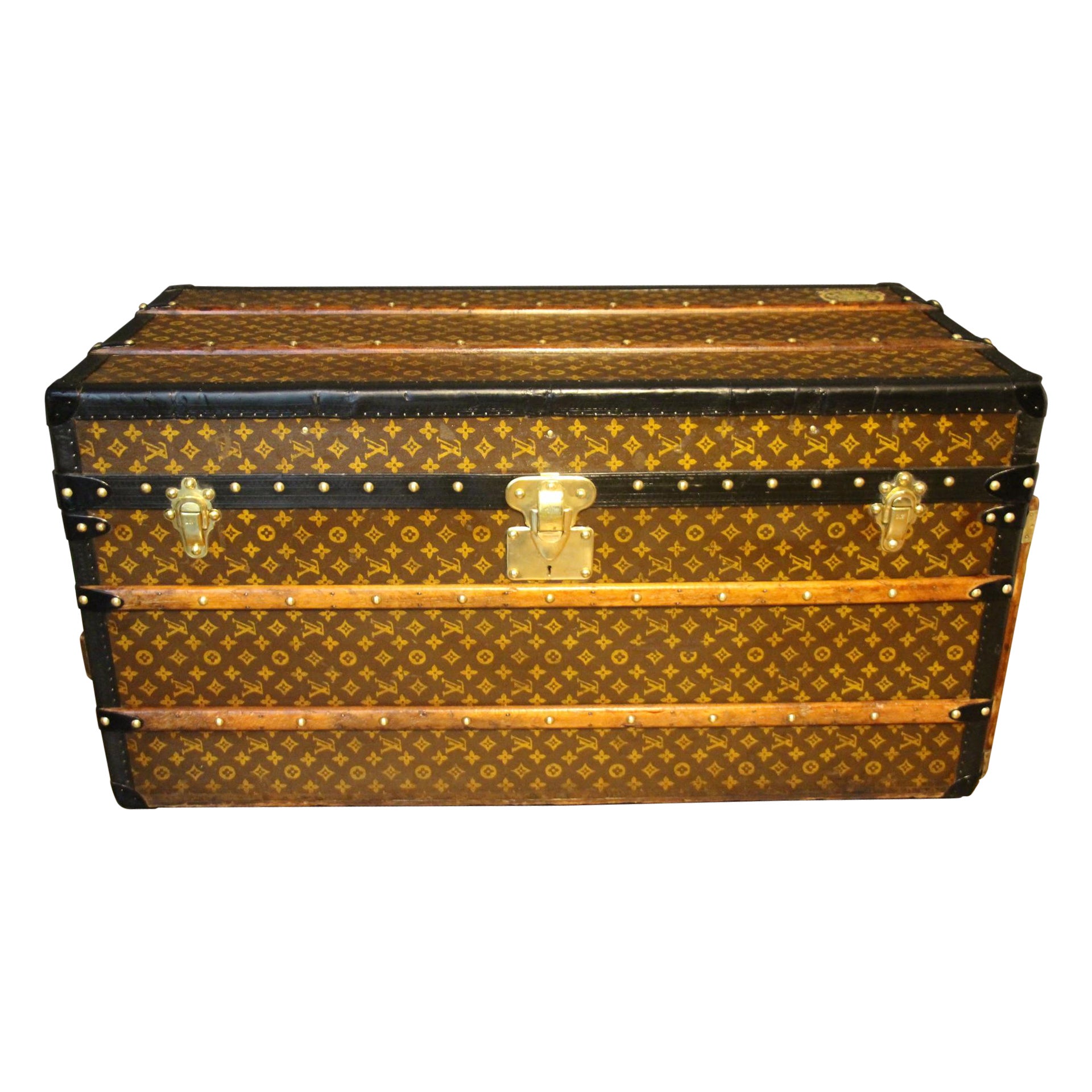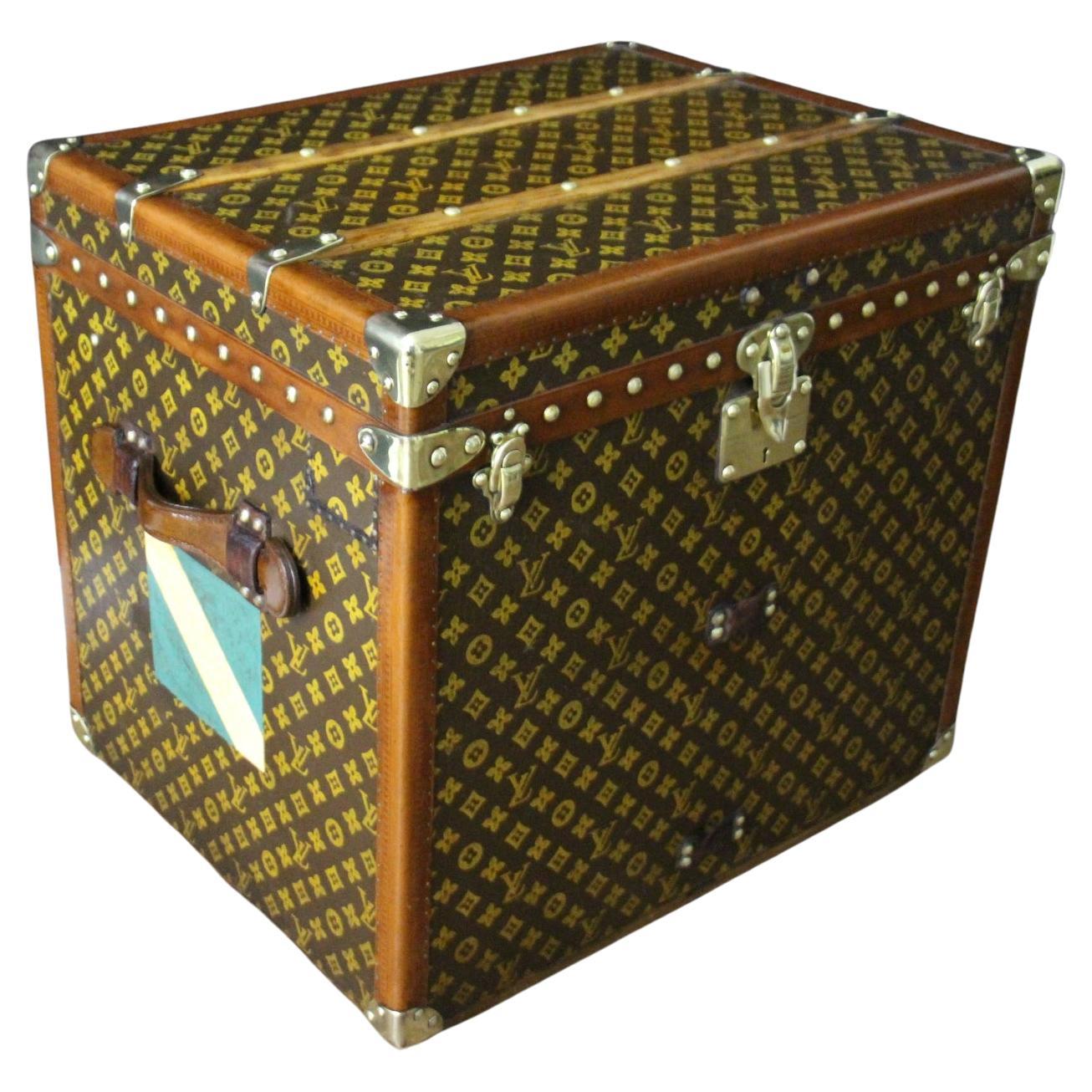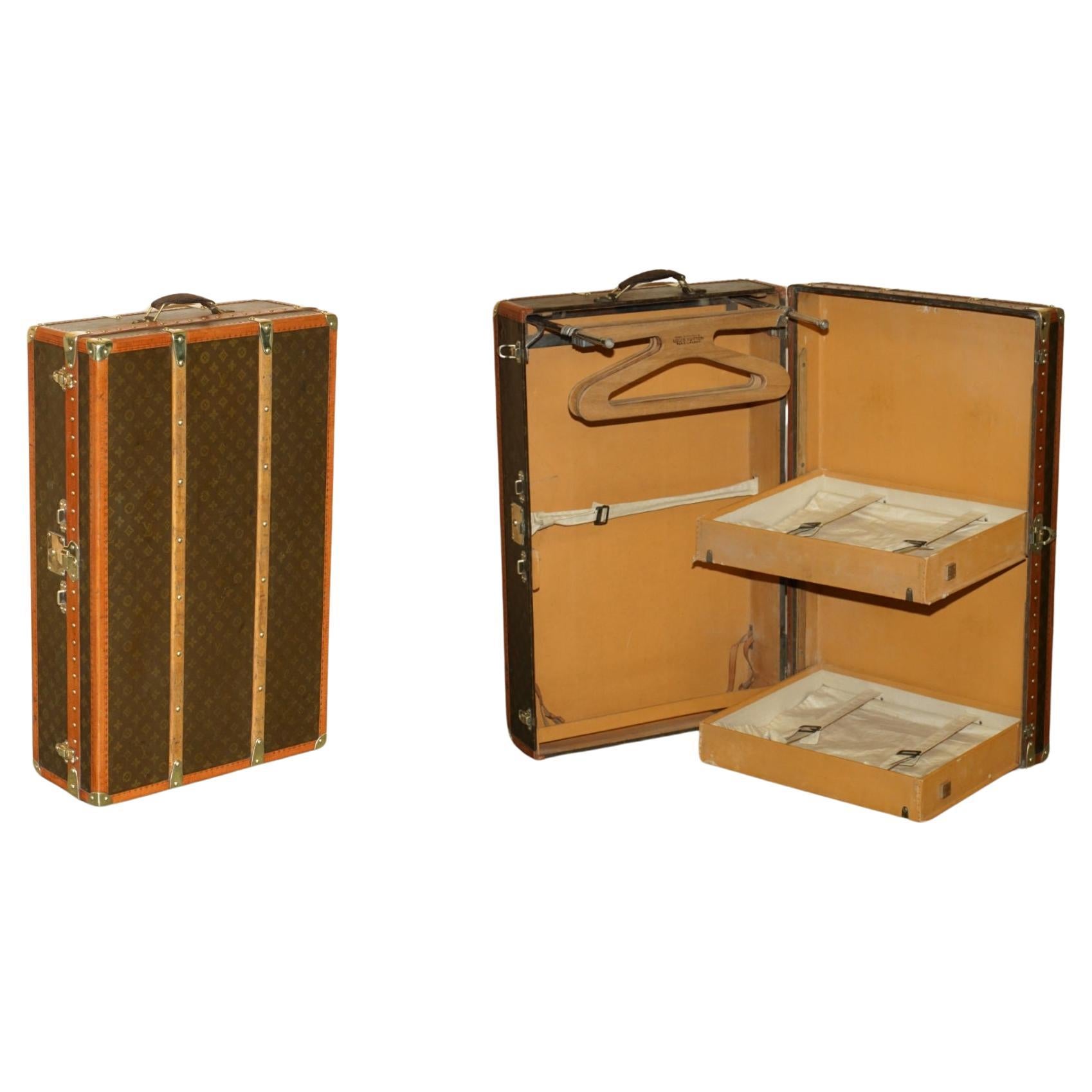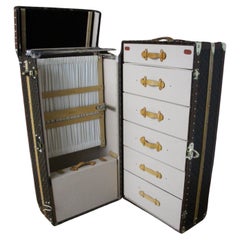
Louis Vuitton Wardrobe Trunk in Orange Vuitonitte
View Similar Items
Louis Vuitton Wardrobe Trunk in Orange Vuitonitte
About the Item
- Creator:Louis Vuitton (Manufacturer)
- Dimensions:Height: 44.89 in (114 cm)Width: 22.05 in (56 cm)Depth: 22.05 in (56 cm)
- Materials and Techniques:
- Place of Origin:
- Period:
- Date of Manufacture:1920s
- Condition:
- Seller Location:Haguenau, FR
- Reference Number:Seller: MTT2015-39 Malle Louis vuitton Wardrobe en vuitonitte orange1stDibs: LU106803345022
Louis Vuitton
The story behind iconic luxury brand Louis Vuitton — best known for its esteemed handbags, crossbody bags, leather goods, ready-to-wear clothing and more — is one of craft and innovation in the worlds of fashion, jewelry and furniture.
The company’s modest origins can be traced back to when its founder, Louis Vuitton (1821–92), wishing to free himself from the conventional lifestyle in his provincial French city of Anchay as well as a difficult stepmother, left in the early 1830s to make a new life in Paris. The young Vuitton was 13 at the time and would need to travel on foot to get to the capital, which was hundreds of miles away. With stops along the way to make money so that he could forge ahead, the journey took a couple of years, but reward was close at hand.
When he arrived in Paris, Vuitton made a living with his hands. He toiled as a box maker and packer for more than a decade and built relationships with royals and members of the upper class while working for the empress of France, Eugenie de Montijo. In 1854, Vuitton launched his namesake company. The craftsman opened a humble workshop on rue Neuve des Capucines and advertised his services with a small poster that read: “Securely packs the most fragile objects. Specializing in packing fashions.”
Long before his brand would become known globally for its exemplary top-handle bags and stylish totes, Vuitton produced stackable and rectangular trunks. The most common trunks of the era were round, which weren’t ideal for toting and storing. In 1858, Vuitton debuted his lightweight, handcrafted canvas trunks, which were sturdy, rugged and equipped with convenient compartments. Travel’s popularity broadened in the late 19th century, and Vuitton’s trunks could easily be packed into train cars and ships — upright trunks meant hanging wardrobe storage that would allow his clients to transport their sophisticated garments without worry. Demand increased and the company grew. When Louis Vuitton died in 1892, control of the luxury house was passed onto his only son, Georges Vuitton.
In 1914, a Louis Vuitton store opened at 70 Champs-Élysées. The largest travel-goods store in the world at the time, it became the company’s flagship.
The Louis Vuitton brand embodies all the attributes of luxury, from the craftsmanship, exclusivity and relevance to heritage. It’s only appropriate that it boasts one of the most recognizable insignias — the imaginative interlocking of letters and fleurettes — in the fashion world. The famous LV monogram was first used in 1896 as part of an initiative by Georges to prevent counterfeiting of his coveted new line of travel trunks. It’s one of the earliest examples of fashion branding.
The LV monogram would soon appear on everything from bags and various fashion accessories to alligator-skin champagne cases, from stylish apparel and earrings to teddy bears and airplane models.
On 1stDibs, the unmistakable insignia can be found on both modern and vintage Louis Vuitton shoulder bags, suitcases, original 19th-century trunks, jackets and more.
- Louis Vuitton Wardrobe Trunk , Louis Vuitton Trunk, Vuitton Steamer TrunkBy Louis VuittonLocated in Saint-Ouen, FRThis impressive Louis Vuitton wardrobe features monogramm canvas, lozine trim, LV stamped solid brass locks and studs as well as solid brass corners. It has got a lift top that close...Category
21st Century and Contemporary French Trunks and Luggage
MaterialsBrass
- Wardrobe Louis Vuitton TrunkBy Louis VuittonLocated in palm beach, FLIn 1870’s, the Wardrobe trunk became the ultimate symbol of Parisian chic for outfits and accessories. Since, it undergoes a constant evolution to keep pace with the exigences of mod...Category
Vintage 1980s French Wardrobes and Armoires
MaterialsBrass
$73,000 - Louis Vuitton Wardrobe Trunk, Vuitton Trunk, Louis Vuitton Steamer TrunkBy Louis VuittonLocated in Saint-Ouen, FRThis superb Louis Vuitton wardrobe features stenciled monogram canvas, lozine trims and solid brass lock, clasps and studs. Lock, clasps and studs are all marked Louis Vuitton. Customised hand painted French flag on its top and on its bottom adds some personality and elegance.It also features a couple of travel labels. Its interior is complete with its original hangers, a folding hanging section, and a series of drawers with leather pulling handles. Its drawer's inside are very clean too and all original.Its last compartment was used to store 2 pais of...Category
Early 20th Century French Art Deco Trunks and Luggage
MaterialsBrass
- 20th Century Louis Vuitton Wardrobe Trunk In Orange "Vuittonite" Canvas c.1920By Louis VuittonLocated in Royal Tunbridge Wells, KentStep into the realm of vintage luxury with this exceptionally rare wardrobe trunk from Louis Vuitton, hailing from the early 20th century, around 1900-1910. Draped in the distinctive orange "Vuittonite" canvas, this vertical trunk opens to reveal spacious hanging compartments on both sides, providing a charming blend of functionality and elegance. The rarity of trunks adorned with this unique finish, known for its stain and water-resistant properties, sets it apart from its more common monogrammed counterparts. Once a staple canvas for Vuitton's trunks from the turn of the century to the 1920s, the orange Vuittonite canvas has become a sought-after treasure for collectors, making this wardrobe trunk a unique and appreciated addition to any discerning collection. An exquisite focal point for interior decor, it not only tells the story of Louis Vuitton's historic craftsmanship but also stands as a testament to the enduring allure of vintage luxury. A brief history about Louis Vuitton trunks: Louis Vuitton was born in 1821 to a farmer and milliner and came from a long-established working-class family in eastern France. Vuitton grew up understanding the effects of perseverance and a strong work ethic from watching his family. At the age of 16, he made the decision to walk 292 miles from his hometown to Paris to try and make a new life for himself. When he arrived the city was in the midst of industrialization with current modes of transportation evolving quickly allowing for longer journeys. With this came the need for sturdy travel pieces. Vuitton was taken as an apprentice for a successful box maker and packer named Monsieur Marechal. He learned to craft durable containers and how to pack them properly – a well-respected profession at the time.In 1854, years after he had mastered his craft and became well respected for it, Vuitton ventured out on his own to open a shop on Rue Neuve des Capucines. It was here that he began to establish himself as a luggage maker. Then, in 1858, Vuitton designed the first Louis Vuitton steamer trunk. At the time trunks had rounded tops to allow for water to run off but this did not allow for convenient stowage. Vuitton introduced a flat, yet waterproof, trunk that was easily stackable. The first of his trunks were outfitted with a grey canvas referred to as Trianon – it wouldn’t be until several decades later that the signature monogram would be introduced. With a burgeoning business, Vuitton moved his family and workplace to Asniere, where he employed twenty workers to craft his trunks. By 1900 he would have 100 employees, and in 1914 the company would more than double in size. After years of success, Vuitton began to experiment with the design of his luggage by introducing a new striped canvas pattern (1876) and later the still well-known Damier print (1888). The hand-painted patterns were developed to prevent counterfeits. Even in the late 1800s, Louis Vuitton was enough of a status symbol to warrant counterfeiting. In 1886, his son George invented and patented an ingenious locking system that made it impossible to pick the lock of their trunks. This lock is still used today. 1892 would prove to be a time of mourning for the family as Louis Vuitton passed...Category
20th Century French Other Trunks and Luggage
MaterialsBrass
- Orange Louis Vuitton Trunk, Vuitton Courrier Trunk, Louis Vuitton Steamer TrunkBy Louis VuittonLocated in Saint-Ouen, FRThis magnificent little Louis Vuitton courrier trunk features the very sought after orange canvas , Louis Vuitton stamped solid brass locks, studs and latches as well as beautiful la...Category
Antique Early 1900s French Art Deco Trunks and Luggage
MaterialsBrass
- Exceptionally Large Louis Vuitton Wardrobe Trunk, circa 1955By Louis VuittonLocated in London, GBA rare, very large scale brass bound Louis Vuitton wardrobe trunk in LV Monogram with lozine trim and original interior fittings providing hanging space; circa 1955. Has the original...Category
Vintage 1950s French Trunks and Luggage
MaterialsBrass, Metal
Recently Viewed
View AllRead More
How to Spot a Fake Louis Vuitton
What are the telltale signs that you're holding a real Louis Vuitton and not a knockoff? We spoke with expert Diane D’Amato to find out. Of course, you don't have to worry about fakes on 1stDibs, where every seller is highly vetted.
Inside Louis Vuitton’s Most Popular Handbag Collaborations
The venerable brand has earned accolades (and gained new fans) for partnerships that meld fashion with art.

